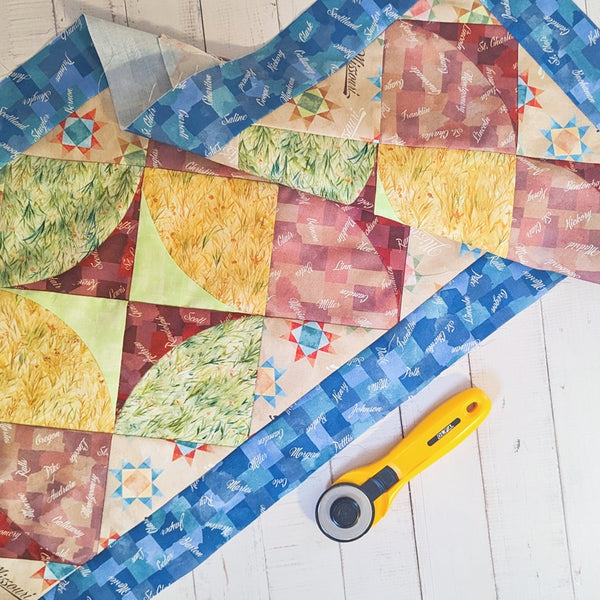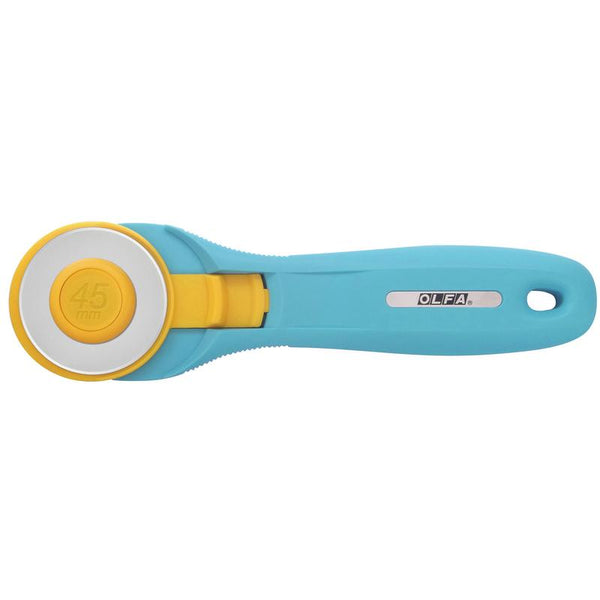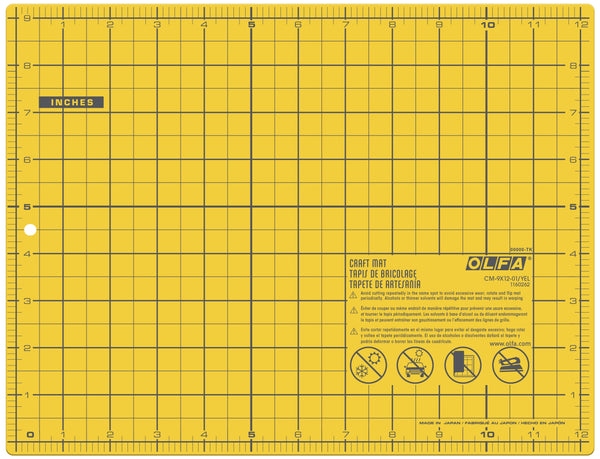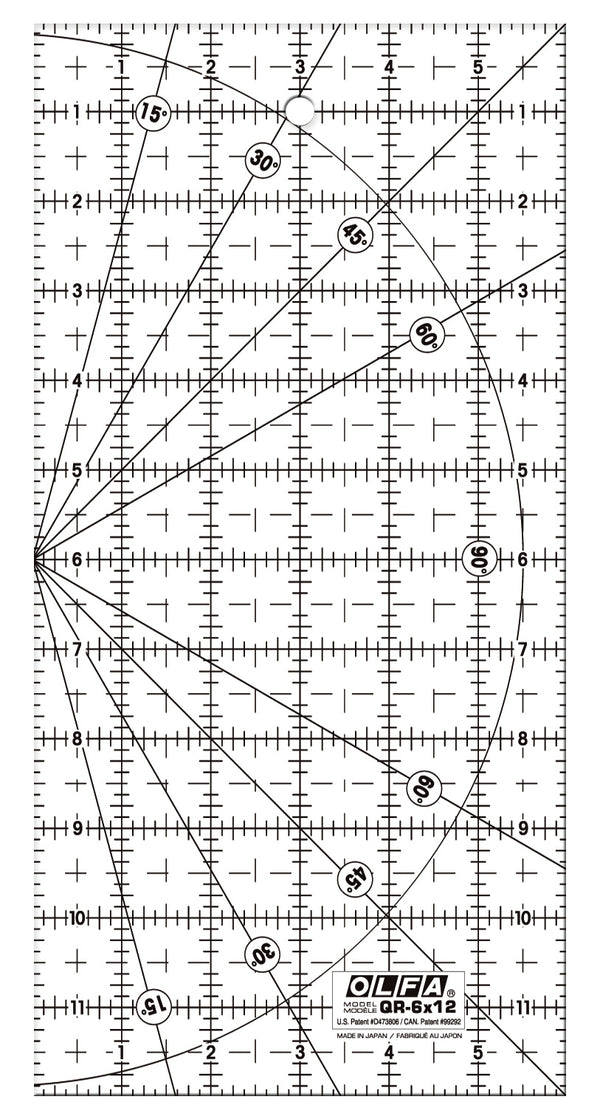
Missouri Table Runner

Designer: Daisi Toegel
Instagram: @daisitoegel
Website: www.flowersew.com
------------------------------------------------
Size: 17in x 49in
Skill level: Confident Beginner
Pattern notes:
- Please read all instructions before beginning.
- Seam allowance is ¼” unless noted otherwise.
- WOF = width of fabric: assume 21” for Fat Quarter (FQ) and 42” WOF for yardage (YD).
Tools:
OLFA 45mm RTY-2/C Quick-Change Rotary Cutter
OLFA CM-9x12-01/YEL Double-Sided Self-Healing Cutting Mat
OLFA QR-6x12 6" X 12" Frosted Acrylic Ruler

Fabric Requirements:
|
(20 curved piecing blocks | 5in unfinished block size) |
|
|
Color A (cA) = Counties Mauve |
1 FQ |
|
Color B (cB) = Counties Red |
1/3yd |
|
Color C (cC) = Grass Green |
1 FQ |
|
Color D (cD) = Grass gold |
1 FQ |
|
Color E (cE) = Bender Honeydew |
1 FQ |
|
Color F (cF) = Quilt Blocks (Background) |
1 FQ |
|
Color G (cG) = Counties Blue (Sashing) |
1/4yd |
|
Backing |
2yd or 21in x 53in piece |
|
Binding |
1 FQ |
|
Batting |
21in x 53in |
*Download and print at 100% the TEMPLATE SHEET.
Cutting instructions:
Color A = use TEMPLATE A: cut (3) 5 1/2in x WOF strips; sub-cut (8) 5 1/2in squares;
Color B = use TEMPLATE B: cut (2) 6in x WOF strips; sub-cut (14) 6in squares;
Color C = use TEMPLATE A: cut (2) 5 1/2in x WOF strips; sub-cut (6) 5 1/2in squares;
Color D = use TEMPLATE A: cut (2) 5 1/2in x WOF strips; sub-cut (6) 5 1/2in squares;
Color E = use TEMPLATE B: cut (2) 6in x WOF strips; sub-cut (6) 6in squares;
Color F = cut (3) 5 1/2in x WOF; sub-cut (7) 5in squares AND (1) 5 1/2in square.
Color G = sashing = cut (3) 2 1/2in x WOF; sew them all together on the 90-degree angle as done for regular binding.
Binding: Cut (7) strips 2 1/2” x WOF, join the strips on the straight grain, not on the 90-degree angle. Press seams open.
To trace and cut the templates, please use the chart below to refer to the strips sub-cut into squares cut above. Each template used for each fabric square fits perfectly in the space to be traced and cut.

Sew the blocks:
This project is made using three (3) different pairs of fabric to make all the 20 blocks and it’s set on point. All 20 blocks are drunkard’s path.*cA + cB = sew 8 blocks
*cC + cB = sew 6 blocks
*cD + cE = sew 6 blocks
You don’t need to pin or clip the shapes to sew. Start aligning the tip of Template B shape right sides together with the corner of template A shape for each block fabric sequenced above. Sew using 1/4in seam allowance.






Sew the runner quilt top:
- Following the chart below, sew the 8 rows. Attention to the correct rotation of each block.
- Piece the rows together first, and lastly add the corners (see figure A and B on the chart below).
- Press the seams to opposite directions on each row, and the corner seams towards the corner tips.









